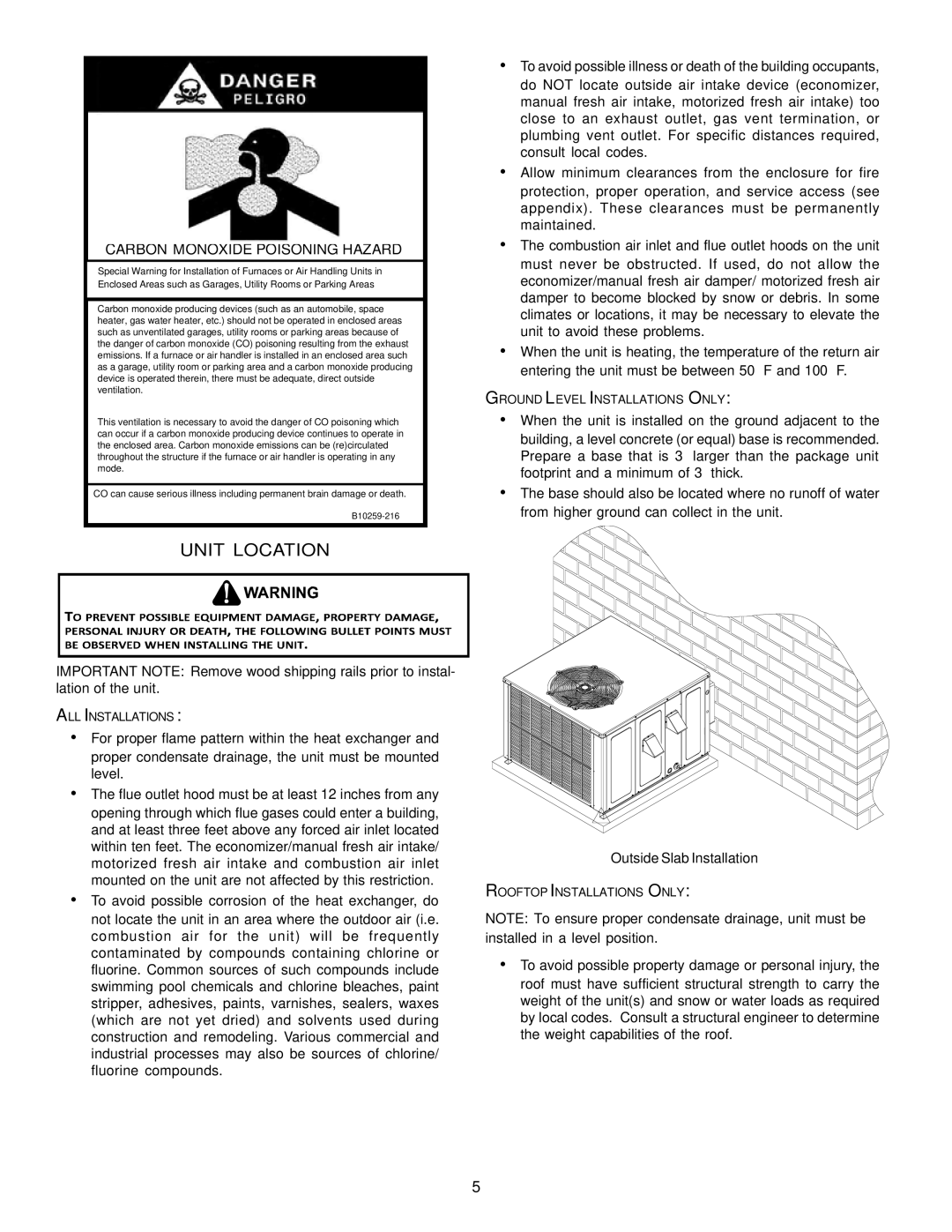PG 15 specifications
Goodman Manufacturing's PG 15 series stands out in the competitive HVAC market as a high-efficiency, cost-effective option for both residential and light commercial applications. This product line is particularly valued for its reliable performance and innovative technologies, which focus on energy efficiency, durability, and user comfort.One of the main features of the PG 15 is its SEER (Seasonal Energy Efficiency Ratio) rating, which reflects its ability to provide superior cooling while using less energy. The higher the SEER rating, the more efficiently the unit operates, leading to significant savings on energy bills. The PG 15 boasts an impressive SEER rating, making it an ideal choice for conscientious consumers looking to lower their utility costs.
Incorporating advanced technologies, the PG 15 features a high-efficiency scroll compressor. This design minimizes vibration and noise, providing a quieter operation that enhances overall comfort in the living or working environment. Additionally, the compressor is designed for longevity, reducing maintenance needs and enhancing the unit's lifespan.
Another notable characteristic of the PG 15 is its durable construction. The unit is built with a galvanized steel cabinet that is protected with a rust-resistant finish, ensuring it withstands the rigors of harsh weather conditions. The 15-inch fan motor and multi-speed blower also contribute to efficient airflow and improved indoor air quality, while the refrigerant management system aids in efficient cooling performance.
Installation versatility is another advantage of the PG 15 series. Designed to accommodate a range of installation setups, this system can easily integrate into existing frameworks, making it suitable for both new constructions and retrofits.
Furthermore, Goodman Mfg places emphasis on customer satisfaction and support. The PG 15 series comes with a comprehensive warranty, offering peace of mind to homeowners and business owners alike. This commitment to quality and customer service has helped Goodman establish a reputation for reliability and performance in the HVAC industry.
In summary, the Goodman PG 15 stands out due to its energy-efficient design, advanced technologies, durable construction, and versatile installation options, making it a compelling choice for anyone seeking an effective and reliable HVAC solution.

